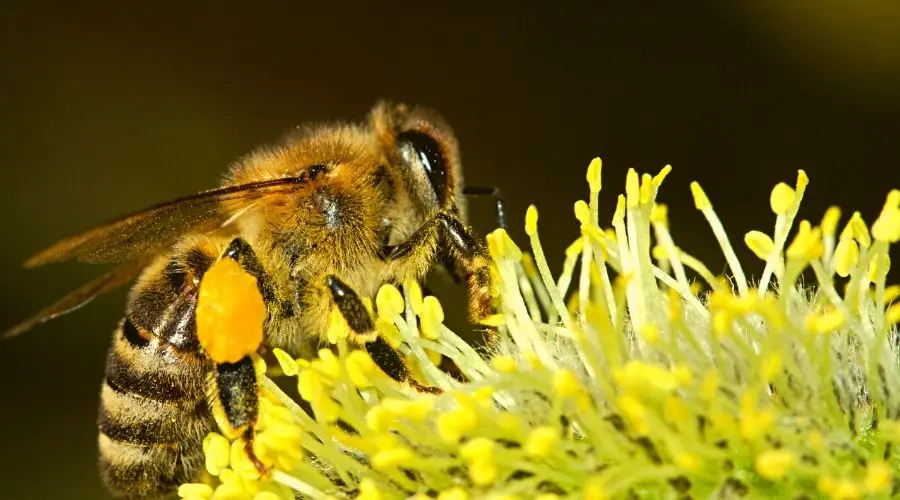Bees are very smart insects also known as “super organisms” and actually one of the most productive insects in the world. Have you ever wondered how long these intelligent insects live for?
In this article we are going to tell you all about it.
There are about 16,000 known species of bees in seven recognized biological families.
Some species such as honey bees, bumblebees, and stingless bees live socially in colonies while most species – including mason bees, carpenter bees, leafcutter bees and sweat bees – are solitary. [1]
How Long Do Bees Live?
- The queen bee can live up to 3-4 years if all the conditions are right
- Drone bees can live up to 4-8 weeks
- Sterile worker bees live for about 6 weeks during summer and up to 5 months during winter
The lifespan of a bee varies with species, sex and the role they play in the colony. Here is a table summarizing the average lifespans of the bumble bees, drones and carpenter bees.
| Species | Average Lifespan |
|---|---|
| Queen Bumble Bee | 3- 4 years |
| Male Bumble Bee | 2-4 weeks |
| Worker Bumble Bee | 5-6 weeks |
| Drone bee | 4-8 weeks |
| Carpenter bee | 2-3 years |
How Long Do Bumble Bees Live?
- Male bumble bee lives for 2 weeks on average
- Queen bumble bee lives for 3 -4 years
The lifespan of a bumble bee is dependent on the specific location and its eco-system. Bumblebees that live in tropical areas tend to live longer than those living in colder areas.
Also the specific role the bee plays in the colony affect its lifespan. For example, the Queen bumblebee has an average life span is 3-4 years if all conditions are right and she is free from any disorders.
Queen bees tend to live longer since they spend most of their time hibernating and laying eggs.
A queen bee should produce a good amount of eggs otherwise she may be replaced by the worker bees or the beekeeper. This would in turn lead to the shortening of her lifespan.
The male bumble bees have a shorter lifespan. On average the male bumble bee lives for 2 weeks.
As soon as a male bumblebee is produced it flies very far away from the nest in order to find a new virgin queen to mate with.
After mating the male bumblebee dies. Others that are not lucky to find a new queen mate, return to the hive and are allowed to live as long as the worker bees allow them to.
How Long Do Carpenter Bees Live?
The average life span of a carpenter bee is 2-3 years.
Together with the queen bumble bees, the carpenter bees are the largest native bees in the world.
There can be more than one or two generations of carpenter bees in a year. They tend to live in unpainted weathered wood usually from softer species of trees like the pine, cypress and cedar.
Worker Bees
Their average life span of worker bee during the active periods is 5-6 weeks. During winter period a worker bee can live up to 4- 6 months.
A worker bee is tasked for providing for the colony by foraging nectar and pollen. They are tasked with gathering water that is used in cooling the hive during hot days and diluting the honey for larvae to feed on. It usually works itself to death after approximately 500 miles of flight.
Drone Bees
Adult drone bees leave the hive 6 days after emerging from the pupa cell, flying to areas of known drone congregation and look for a new virgin queen bee with whom to mate with.
When they are unlucky to find a mate they return to the hive. Drone bees that were successful in finding a mate die minutes or hours after mating with a queen bee.
A queen honey bee may live up to 3-4 years if all the conditions are right and there are no disorders present, while a drone bee may live up to 4-8 weeks.
How Long Do Bees Live After Stinging?
A honey bee usually dies minutes after stinging mammals. In thick skins’ such as a mammal’s skin, the stinger would lodge in the victim’s body. This process would end up tearing the bee’s abdomen since the honeybee is not able to pull the stinger back out. This leads death.
Honey bees are usually very composed insects and they rarely sting people when foraging nectar or pollen unless when they are roughly handled or when they perceive the hive to be in danger.
Bees with a barbed stinger can sting other insects without necessarily harming themselves since the insects’ skin is not as thick as that of human.
Bumblebees, carpenter bees and other solitary bees have rather smoother stings and can sting mammals repeatedly without harming themselves.
Next read


